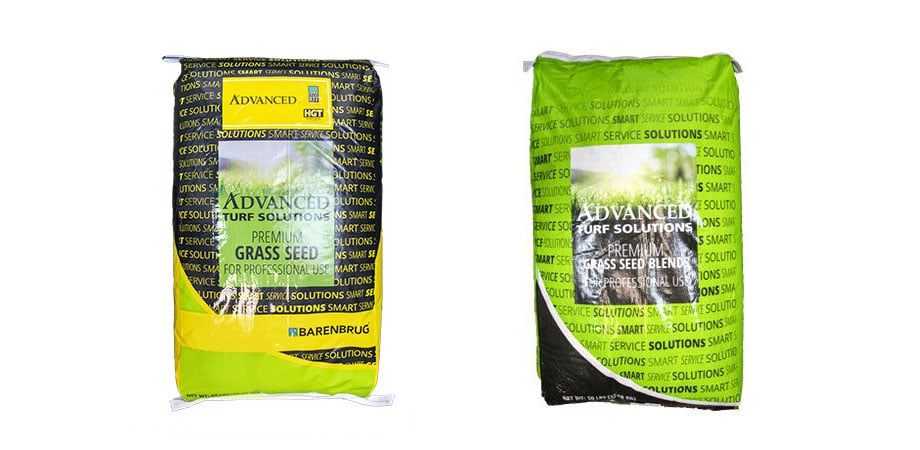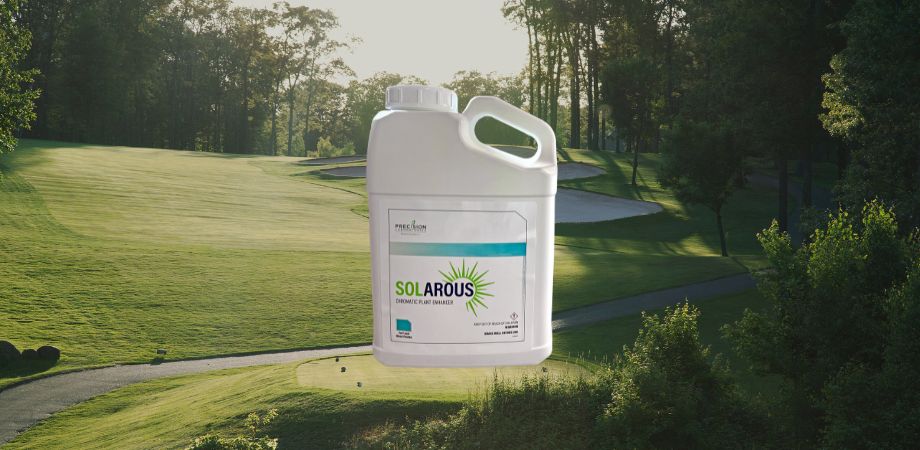Turf-type tall fescue (TTTF) is a popular grass for lawns, sports fields, and golf courses. It is in the Festuca arundinacea species but has improved traits. Tall fescue is known for having coarse leaves, but the turf-type variety has been bred to have finer blades. It also has a dark green color that’s visually appealing to homeowners, athletic facilities, and golf course superintendents alike.
TTTF is usually considered a bunch-type grass but can have rhizomes. Its bunchy nature can prevent it from filling in bare areas, which can leave room for weeds to grow in those areas instead. For this reason, TTTF is sometimes blended with other grasses, such as Kentucky bluegrass or perennial ryegrass. We have several options: Advanced Athletic Tuff Mix (80% TTTF, 10% Kentucky Bluegrass, 10% Perennial Ryegrass), Advanced TTTF Plus (90% TTTF, 10% Kentucky Bluegrass), and Advanced RTF with HGT (95% Rhizamous Tall Fescue, 5% HGT Kentucky Bluegrass) blended specifically for areas where more density is required.
TTTF is considered a “middle ground” between Kentucky bluegrass and perennial ryegrass. It germinates at soil temperatures of 60°F, the same as perennial ryegrass. However, it germinates slightly slower than perennial ryegrass. Compared to Kentucky bluegrass, TTTF germinates and grows faster—meaning it also requires more mowing. Like Kentucky bluegrass, though, TTTF seedlings have good traffic tolerance.
TTTF is known for its extensive root system, which can grow as deep as three feet. This is much deeper than other cool-season grasses and allows TTTF to “find” more water in the soil, meaning it can tolerate clay and sandy soil conditions. At the same time, TTTF can also tolerate wet soils.
TTTF is a cool-season grass, but it is also well-adapted to warmer climates. It is especially valuable in the transition zone, where warm-season grasses can struggle with seasonally cool temperatures and lack of sunlight. TTTF has better shade tolerance than other common cool-season grasses, except fine fescues.
TTTF is also more tolerant of heat than other cool-season grasses. Some species of grass struggle with the warm end of the temperature spectrum in transition areas, but TTTF is well-adapted to heat and sun. With proper irrigation, it can even tolerate full-sun conditions.
The water-seeking root system of TTTF makes it more resistant to drought as well. While Kentucky bluegrass is likely to go into dormancy during summer drought, TTTF can remain green through the season. Its low irrigation needs make it a good low-maintenance option for homeowners and busy turf managers.
Our Advanced TTTF products are selected particularly for their drought tolerance, and many of the products are Turfgrass Water Conservation Alliance (TWCA) Qualified, meaning they are proven to need 40% less water than typical TTTF varieties to maintain healthy growth and dark green color. TTTF also has low fertilizer needs, reducing input costs all around. Keep in mind that it does still require more mowing than Kentucky bluegrass due to its faster growth.
Advanced TTTF, Advanced RTF, and Advanced RTF with HGT products are also available coated with Foliar-Pak XCD, a protective coating that holds moisture and helps the seed survive in hot, dry conditions during germination and establishment. Click here to learn more about this coating, or browse all of our options in this seed guide.












